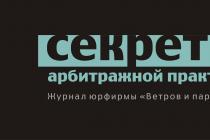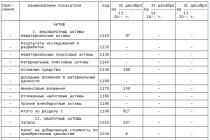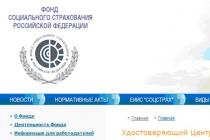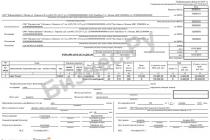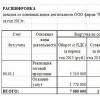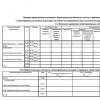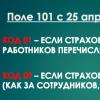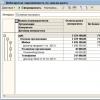The system of taxation is the procedure for collecting money, which everyone, receiving income, must give to the state budget. Taxes in Russia are paid not only by businessmen, but also by ordinary people whose income consists of one salary.
Competent tax planning may well lead to the fact that the income tax of a person who receives only a salary and does not conduct business activities will be higher than the tax burden of an individual entrepreneur, so choosing the right taxation procedure is very important.
The simplified taxation scheme (STS) in our country can be used in two varieties, which are called Income and Income minus expenses. Inexperienced entrepreneurs should delve into the principles of each of them in detail in order to decide which is better: STS Income or STS Income minus expenses and how to choose the right system that is more suitable for its activities.
It is not allowed to calculate tax payments under this system for enterprises producing excisable goods, namely alcohol and tobacco, cars and fuel for them, etc., engaged in the extraction of minerals or trade in them, except for those that are considered common (sand, peat, building stone, clay and crushed stone). Also The simplified tax system is not allowed for banks, investment funds, private pension funds, private lawyers and notaries, pawnshops, insurers and professional figures in the securities market.
The USN system cannot be used by those LLCs and individual entrepreneurs in which the participation of third-party organizations exceeds a share of 25%, but this does not apply to foreign enterprises, as well as budgetary and state-owned firms.
The number of full-time employees for calculating the tax base under this system cannot exceed 100 people.
An operating enterprise will not be transferred to a simplified taxation scheme if its profit exceeded 45,000,000 rubles for three quarters of the current year, but such a restriction does not apply to private entrepreneurs.
All expenses must be accounted for using the "cash" method, that is, the costs can be taken into account only after they have been paid.
However, the right to transfer to the simplified tax system for both enterprises and businessmen is lost if their profit for the last year exceeded 60 million, and this amount is adjusted annually according to the deflator coefficient. This year, its value is set at 1.329, that is, the amount of the limit has turned into 79.74 million.
The procedure for reporting on a simplified system
Tax accounting according to the simplified system outwardly looks quite attractive: it is kept in the Book of the established form, where income and expenditure transactions are entered. In 2013, it became mandatory for enterprises to bookkeeping from which entrepreneurs have so far been exempted.
Reporting in this system is represented by a single declaration, which is submitted based on the results of the calendar year. For enterprises, the deadline for filing is March 31, and for entrepreneurs it has been extended until April 30.
You should be aware that in the USN system there is a reporting period (that is, a calendar year), but there is also a quarterly summing up. This means that it is not necessary to submit a detailed declaration for the results of each three months, but advance payments should be made, calculating them according to the entries in the ledger.
All advance payments are taken into account when calculating the tax that must be paid at the end of the year. If, for any reason, the subject does not make an advance payment within the appointed time, he will also have to pay fine.

Economically justified are expenses that have a business, quite clear, purpose and be aimed at increasing the profits of the enterprise.
USN options
To understand how the simplified tax system differs in the systems Income and Income minus expenses, it is enough to understand the basic concepts in taxation and their differences for these options.
So the object subject to taxation for the simplified tax system Income is only the direct income of the enterprise, while for the system Income minus expenses, the amount received is reduced, as the name suggests, by expenses.
If we talk about the essence of the tax base, then in the first version it is expression of income in monetary units, and in the second monetary value of profit reduced by expenses. The value of tax rates varies depending on the region where the company is registered and varies for the first option in the range of 1-6%, and for the second - from 5 to 15%.
Income minus expenses: what is included in the list of basic concepts
The definition of profit for such taxation in practice does not differ from that used in the STS Income system. So, the income that is taken into account for calculating the amount of tax in the simplified taxation system option Income minus expenses is recognized as non-operating income and income from sales.
Sales revenue includes:
- proceeds from the sale of goods produced directly by the enterprise, as well as services or works performed by it;
- proceeds from the sale of goods which it has acquired specifically for this purpose;
- proceeds from the sale of own property rights.
These amounts can also include financial receipts received as an advance payment or advance against the forthcoming performance of work or delivery of goods.

The following are considered non-operating income:
- things received free of charge, rights to them, as well as income or services performed for the company;
- fines, penalties and other sanctions for violation of contractual terms by a partner (if he was recognized as a debtor or carried out a court decision);
- income from receiving interest on loans issued by the company, from equity participation in third-party organizations, from leasing property (sublease), from participation in a simple partnership;
- write-off of accounts payable of the enterprise.
Income is taken into account in a simplified system cash method, and the date of their recognition is the date of receipt of funds to the bank account of the enterprise or to the cashier. On the same day, the amount of income is reflected in the cash book.
Taxpayers often think that it will be easiest for them to pay to the state budget under the STS system Income minus expenses. What is included in income (expenses), the list is presented in the legislation and, before choosing this system for yourself, you should understand well what is listed in each of its paragraphs.
Regarding income, everything is quite transparently explained above, and what is included in the expenses in the simplified tax system Income minus expenses is determined by the following conditions: expenses must not only be listed in a closed list of allowable ones, but also be justified from an economic point of view and documented.
Economically justified are expenses that have a business, quite clear, purpose and be aimed at increasing the profits of the enterprise. The management team needs to prepare in advance to explain to tax inspectors the need for those expenses whose connection with making a profit is not obvious.
For example, it is necessary to explain why it was necessary to buy a "fancy" computer for the office, and not be satisfied with the usual one, or how the formation of a circle of elite clients is connected with a business car of a representative class.
Sufficient documentary confirmation of expenses is the presence of two documents, one of which proves the operation, and the second - the payment.
Moreover, strict reporting forms in the eyes of the tax authorities are not confirmation of payment of expenses. They will require a payment order, receipt or account statement. You should be aware that such documents, according to legislation, must be stored in the archives for at least four years.

Special conditions apply for the accounting of expenses for the purchase of goods for subsequent resale.
Allowable expenses
The above list of allowable expenses looks like that:
- acquisition of intangible assets and fixed assets;
- reconstruction of fixed assets of production or their in-line repair;
- compulsory insurance of employees, payment for their work and business trips;
- import duties at customs, payment of leasing and rent;
- payment for the services of accountants, auditors, notaries or lawyers;
- payment of fees and taxes, not counting the USN tax itself;
- purchase of products for subsequent resale;
- material costs;
- payment for transport and other services.
The closeness of the list means that the types of expenses not indicated in it cannot be calculated when generating a report according to the unified simplified tax system. It is important to understand that quarterly advance payments are not taken into account when determining the tax base, however, they can be taken into account when reducing the amount calculated according to the declaration submitted at the end of the year.
It should also be remembered that All expenses must be accounted for using the "cash" method., that is, the costs can be taken into account only after they have been paid. For example, it is impossible to take into account the funds intended for the payment of wages to employees on the day it is accrued, this is allowed only when it is actually given to them.
Special conditions are used to account for the cost of purchasing goods for subsequent resale. It is possible to reduce income by their cost only when the company has paid it to the seller and has already transferred the goods to the property of the potential buyer, even if he has not yet had time to pay for it. If the conversation is about materials or raw materials, then in order to reduce income by their cost, it is enough to pay for them to the supplier and receive them from him, but there is no need to wait for their sale to end consumers.


